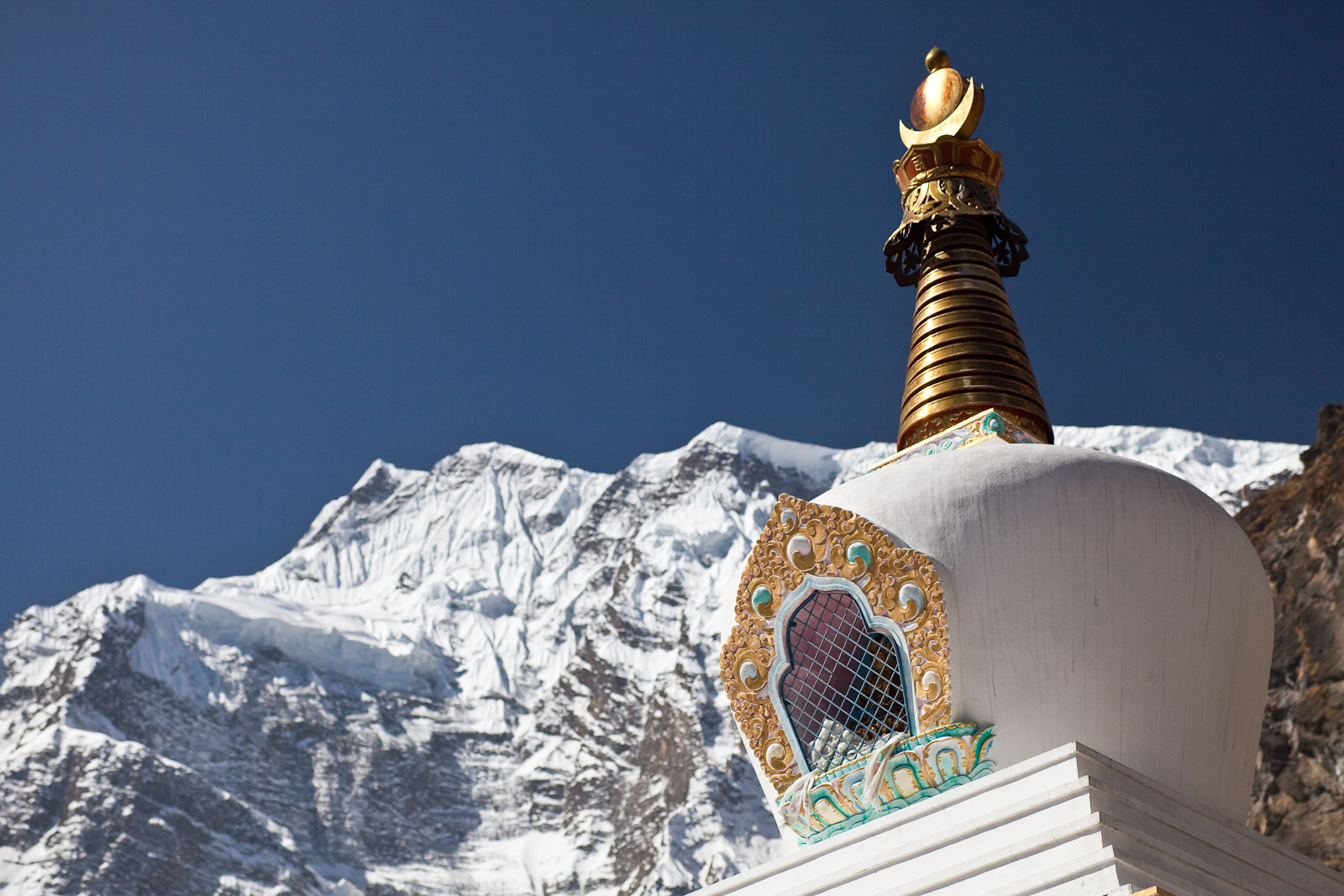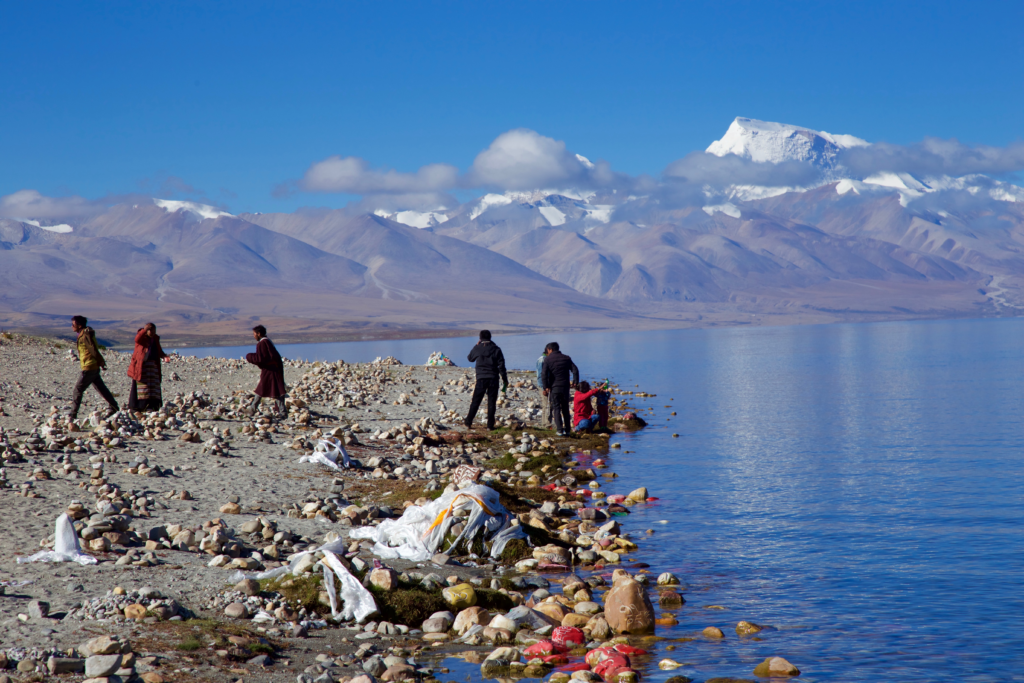A Guide to the Kailash Manasarovar Yatra in 2024

The Kailash Manasarovar Yatra has been the oldest yatras in the world. Located around the Lake Manasarovar, this is a deeply spiritual journey that attracts many visitors throughout the year. Call it devotion or the want to look at some of the most beautiful mountains in the world, the Kailash Manasarovar Yatra, never disappoints. Nestled in the Himalayas, it is believed that Mount Kailash is the home to Lord Shiva, with a belief that is he still resides there. Taking a circle or a complete pass of the Mount Kailash is believed to be auspicious to many. Although it is believed to be a difficult trek due to its altitude and terrain, there’s no stopping to pilgrims who want to visit this religious site.
Well pack your bags and gears as we venture into the Himalayas and give you a complete guide to the Kailash Manasarovar Yatra.
In this Blog
Why is the Kailash Yatra special?
Perhaps a question that ponders in everyone’s mind, what is so special about this yatra. There are many yatras in India, be it the famous Char Dham Yatra or the iconic Amarnath Yatra but none of them are as difficult as this one. Well, the answer lies in the name, Mount Kailash. Mount Kailash is considered to be the holiest site on Earth. Hindus, Buddhists and even Jains believe that a single trip around this majestic peak in the Himalayas can cleanse their soul and provide them peace.

Another special reason behinds this yatra is that many religions tend to believe that Kailash Parbat is the starting point of four rivers – the Indus, Brahmaputra, Sutlej and Karnali. There are two ways to experience the Kailash Manasarovar Yatra. One is the Parikrama and other is the Charan Sparsh.
Is Kailash Manasarovar Yatra difficult?

The Kailash Manasarovar Yatra is one of the most difficult treks in the world. Located at an altitude of 5,630 metres, the highest point of the trek, Dolma La Pass experiences snowfall and icy conditions through the years. The trip to the Masarovar lake is an excellent test of perseverance and endurance, with a destination that rewards you with a scenery like never before. However, it is important to note that people who have trekked before shall take upon this experience that it could get difficult during the off-season or in the winter months of December to January. This also brings us to question that what is the best time for Kailash Manasarovar Yatra that promises a perfect trip?
Best Time for Kailash Manasarovar Yatra
To experience the thrill of trekking in the mountains and then taking a dip in the Manasarovar lake, the best time to for a Kailash Manasarovar Yatra is from May till October. During the time, the summer makes sure that the route is clearly visible and doesn’t have any extreme temperature. Ideally most visit prefer taking this road trip from May to June and then September to October as it offers amazing visibility with mellow temperatures. The temperature of the region generally ranges from 0 to 33 C.

This is also an auspicious time to visit Mt. Kailash as the Saga Dawa Festivals is held during this time. Make sure to indulge with the locals as they deeply believe in taking one circle of Mt. Kailash would provide you with blessings. It’s also the birthday of Lord Buddha and if you’re taking the Tibet route, you’ll be in for a ball of time.
Ideal Route for Kailash Manasarovar Yatra
Since the Kailash Parbat is in Tibet, it becomes one of the few routes to travel to the mountain. There’s also a route from Tibet, but in this blog we’ll take you through the route from Nepal. As Uttarakhand lies on the border of Nepal, it makes perfect sense to travel via this route to the Kailash Manasarovar Yatra. Officially, there are two routes decided by the government of India, one going via Kumaon in Uttarakhand and one via Nathu La Pass in Sikkim.
Kailash Manasarovar Yatra via Uttarakhand – With newly built road to the Lipulekh Pass in Uttarakhand, the journey to the Kailash Manasarovar decreases significantly. To reach up until this point, one needs to travel from Kathgodam and then move towards Dharchula followed by the Lipulekh Pass and the Johar valleys. It is from Johar Valleys that the one needs to trek till the Manasarovar lake and then take circle of the Mount Kailash. The total duration of the Yatra through this route via Kumaon is 24 days.
Kailash Manasarovar Yatra via Nepal – Visiting the Kailash Manasarovar Yatra via Nepal is a popular and most preferred option. To do this, most people travel from Lucknow to Kathmandu in Nepal. From there, you can either go to Darchen by Helicopter from Nepal or simply take a trek via Hilsa. The entire will take nearly 13 days.
Kailash Manasarovar Yatra via Sikkim – This is one of the official routes given by the Ministry of External Affairs. The route takes nearly 22 to 23 days via the NathuLa Pass in Sikkim. The ideal way to conduct this yatra would be through Gangtok, from where it passes through beautiful lakes and landscape of the Tibetan plateau. The route is suitable for senior citizen as cars and vehicles can easily drive through here.
Ideally, regardless of the route one takes, you’ll reach the Rakshas Lake and Lake Manasarovar first. On a good day, one is allowed to take some water from this sacred site. However, dips are generally allowed depending on the weather conditions. When it comes to the experience, you can either do the Parikrama or Charan Sparsh. The full Parikrama involves taking a full circle starting from Darchen, Yam Dwar, Deraphu Monastry, Dolma Pass via the Gauri und and finally, the Zutulphu Monastery. The entire route is nearly 54 km long.
Make sure to do a routine medical check-up before taking any of these routes.
Permits for the Kailash Manasarovar Yatra
Since the Lake Manasarovar and Kailash Parbat are in Tibet, one needs to obtain permits to take the yatra. Every traveller who intends to visit this beautiful destination, needs to obtain China Group Visa and Tibet Travel Permit. The application can be easily obtained through travel groups, taking 3 to 4 working days and a group visa can cost around Rs. 3000. As most people travel to the Yatra in groups, there are certain other regional travel permits that will be required to take up the walk.
Essential items to pack for Kailash Manasarovar Yatra
When it comes to packing for the Kailash Manasarovar Yatra, there are plenty of things to be considered before.
Make sure that your luggage does not exceed 15 kgs. As you’ll trekking around the route and doing the Parikrama, it will be a hassle to carry it all the way. Carry only the essential items.
You need to make sure that you have multiple layers of clothing or thick winter clothing. Since the weather and terrain conditions can be harsh sometimes, consider trekking shoes as well.
Basic trekking requirements such as trekking poles, electrolytes, convertible tents, sunscreen need to be carried. Along with this, have a separate pouch of your medications and general first aid.
Have a small handbag ready with essential documents such as your passport and visa application details. This would also be useful in carrying money and other permits.
Conclusion
This arduous and challenging trek in the Himalayas can be fun-filled experience. Given that you’re well prepared with all the essentials and needs, you can ideally cover this trip in 20-25 days. Regardless of the route you choose, you’re bound to make a trip filled with memories. It is essential that during those days, you choose a perfect place to stay during Kailash Manasarovar Yatra. There are many lodges, mud huts and cottage in Nepal and Tibet where you can stay during this yatra. In case you’re going with a group or package, you can pre-book this earlier. As India is land of some awesome trekking destination, make sure to checkout the blogs on trekking in India!
Stay Warm and Happy Trekking!




